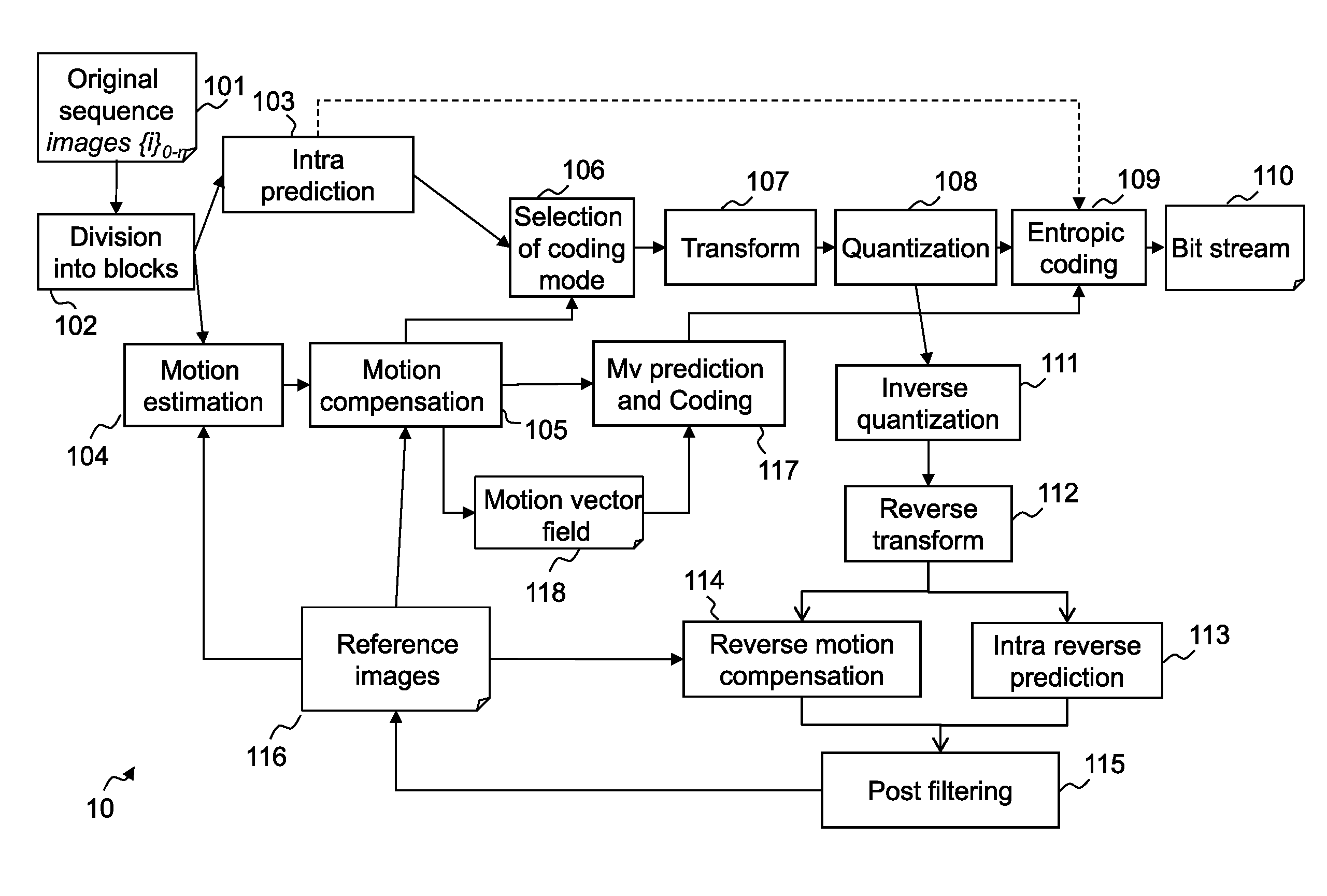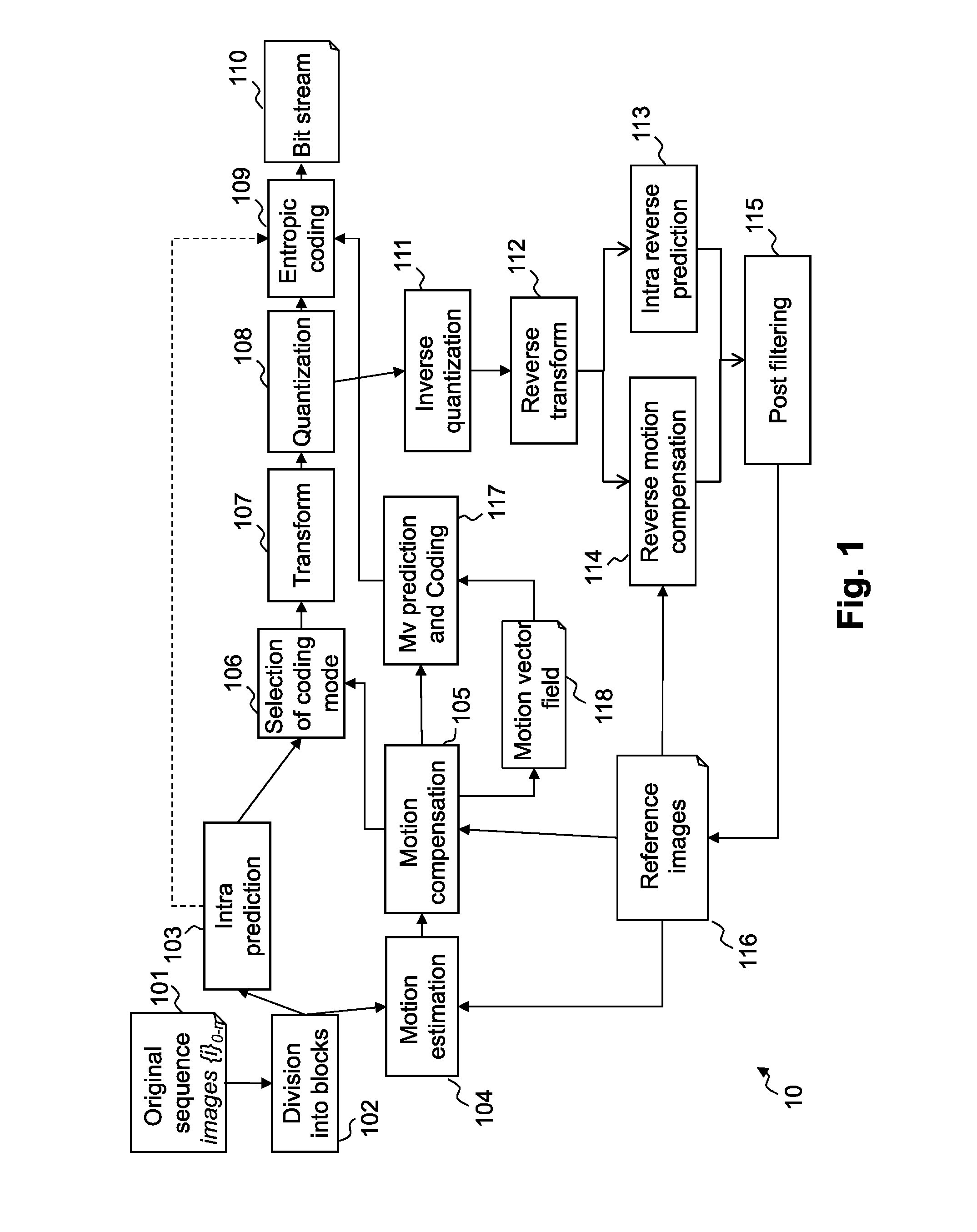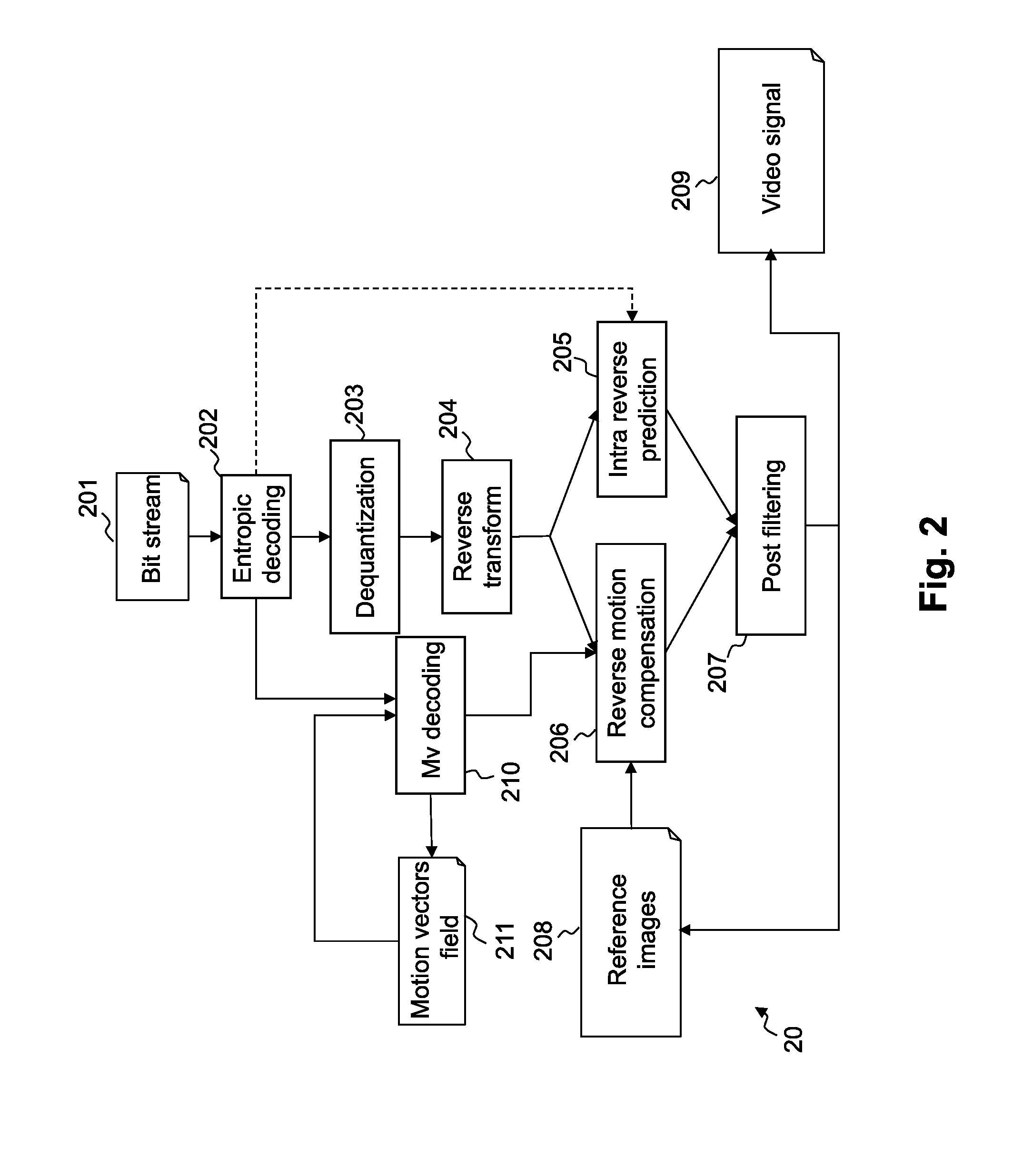Method and apparatus for vector encoding in video coding and decoding
a vector and video coding technology, applied in the direction of electrical equipment, instruments, computing, etc., can solve the problems of loss of information in the encoding process loss of encoding, etc., and achieve the effect of speeding up the encoding process
- Summary
- Abstract
- Description
- Claims
- Application Information
AI Technical Summary
Benefits of technology
Problems solved by technology
Method used
Image
Examples
first embodiment
[0176]In the invention, the evaluation of Inter coding modes and fast IBC coding modes are conducted at the same level without any residue-test between them. A residue-test is a test to determine if so far a predictor block of pixels has been found during the evaluation leading to an encoding of the current block of pixels without residue These two evaluations may be conducted in any order. They may or not be followed by the evaluation of other coding modes.
[0177]FIG. 12 illustrates an example of this first embodiment. In this embodiment, the evaluation of the IBC mode is considered as the same level as the evaluation of the Inter mode in the mode selection process. Compared to FIG. 11, the decision module 1002 has been removed. In that case, even if no residual has been obtained with the Inter mode, the fast IBC mode is evaluated. It means that if the Inter mode is tested in step 1001 (if the CU mode is not SKIP or MERGE or an INTER mode selected with the Hash search step 1025) the...
second embodiment
[0180]In a second embodiment, the Skip coding mode is evaluated first and next the fast IBC coding modes are evaluated if the Skip mode has not been selected. These evaluation may or not be followed by other coding modes evaluations.
[0181]FIG. 13 illustrates an example of this second embodiment. In this example, fast IBC evaluation is done before Inter and Intra evaluation. If a predictor block with no residue is found during this evaluation the search is terminated using step 1021. If not the evaluation process continues with Inter evaluation 1001, Intra evaluation 1003 and so on.
[0182]As a variant, in another variant of this embodiment, fast IBC could also be considered as the same level as Inter mode. Compared to FIG. 13, the decision module 1021 is removed. In that case, even if no residual has been obtained with the Intra mode, the evaluation of the IBC mode is processed. In this embodiment, Inter, fast IBC, Intra and classical IBC are evaluated at the same level.
[0183]In anoth...
third embodiment
[0185]In a third embodiment, an example of which being illustrated in FIG. 14, the fast IBC evaluation is evaluated before any other potential evaluation. In the example, it is followed by the Inter Hash evaluation for the CU mode selection 1020. In the embodiment depicted on FIG. 14, the following modes are evaluated only if the best IBC mode has a residual (arrow “Yes” after block 1021 depicted in FIG. 14).
[0186]In some variants of this embodiment, test bloc 1021 is suppressed and the following evaluations are systematically done.
[0187]In yet another variant of the embodiment of FIG. 14, the fast IBC evaluation is evaluated before the Merge / Skip evaluation for the CU mode selection (the steps order would be 1000, 1022, 12023, 1023 if “No”, 1021 and 1024 if “Yes”). In this case, the fast IBC evaluation may or not be followed by a test bloc 1021 to skip following evaluation in case a CU has been found with no residue.
[0188]In a variant that could apply to all previous embodiments th...
PUM
 Login to View More
Login to View More Abstract
Description
Claims
Application Information
 Login to View More
Login to View More - R&D
- Intellectual Property
- Life Sciences
- Materials
- Tech Scout
- Unparalleled Data Quality
- Higher Quality Content
- 60% Fewer Hallucinations
Browse by: Latest US Patents, China's latest patents, Technical Efficacy Thesaurus, Application Domain, Technology Topic, Popular Technical Reports.
© 2025 PatSnap. All rights reserved.Legal|Privacy policy|Modern Slavery Act Transparency Statement|Sitemap|About US| Contact US: help@patsnap.com



